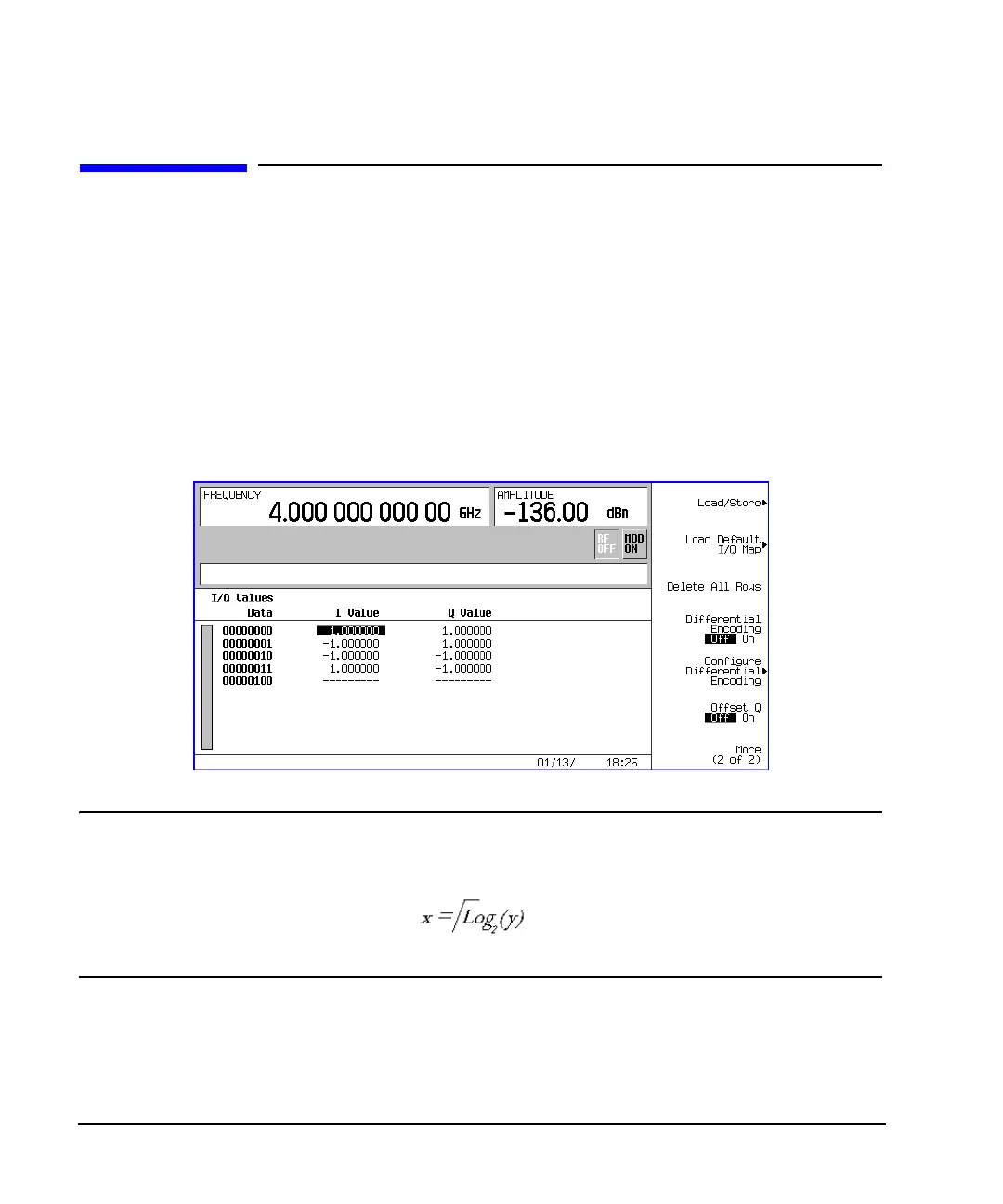180 Chapter 4
Basic Digital Operation
Differential Encoding
Differential Encoding
Differential encoding is a digital-encoding technique whereby a binary value is denoted by a signal change
rather than a particular signal state. Using differential encoding, binary data in any user-defined I/Q or FSK
modulation can be encoded during the modulation process via symbol table offsets defined in the
Differential State Map.
For example, consider the signal generator’s default 4QAM I/Q modulation. With a user-defined modulation
based on the default 4QAM template, the I/Q Values table editor contains data that represent four
symbols (00, 01, 10, and 11) mapped into the I/Q plane using two distinct values, 1.000000 and −1.000000.
These four symbols can be differentially encoded during the modulation process by assigning symbol table
offset values associated with each data value. The following illustration shows the 4QAM modulation in the
I/Q Values table editor.
NOTE The number of bits per symbol can be expressed using the following formula. Because the
equation is a ceiling function, if the value of x contains a fraction, x is rounded up to the
next whole number.
Where x = bits per symbol, and y = the number of differential states.
